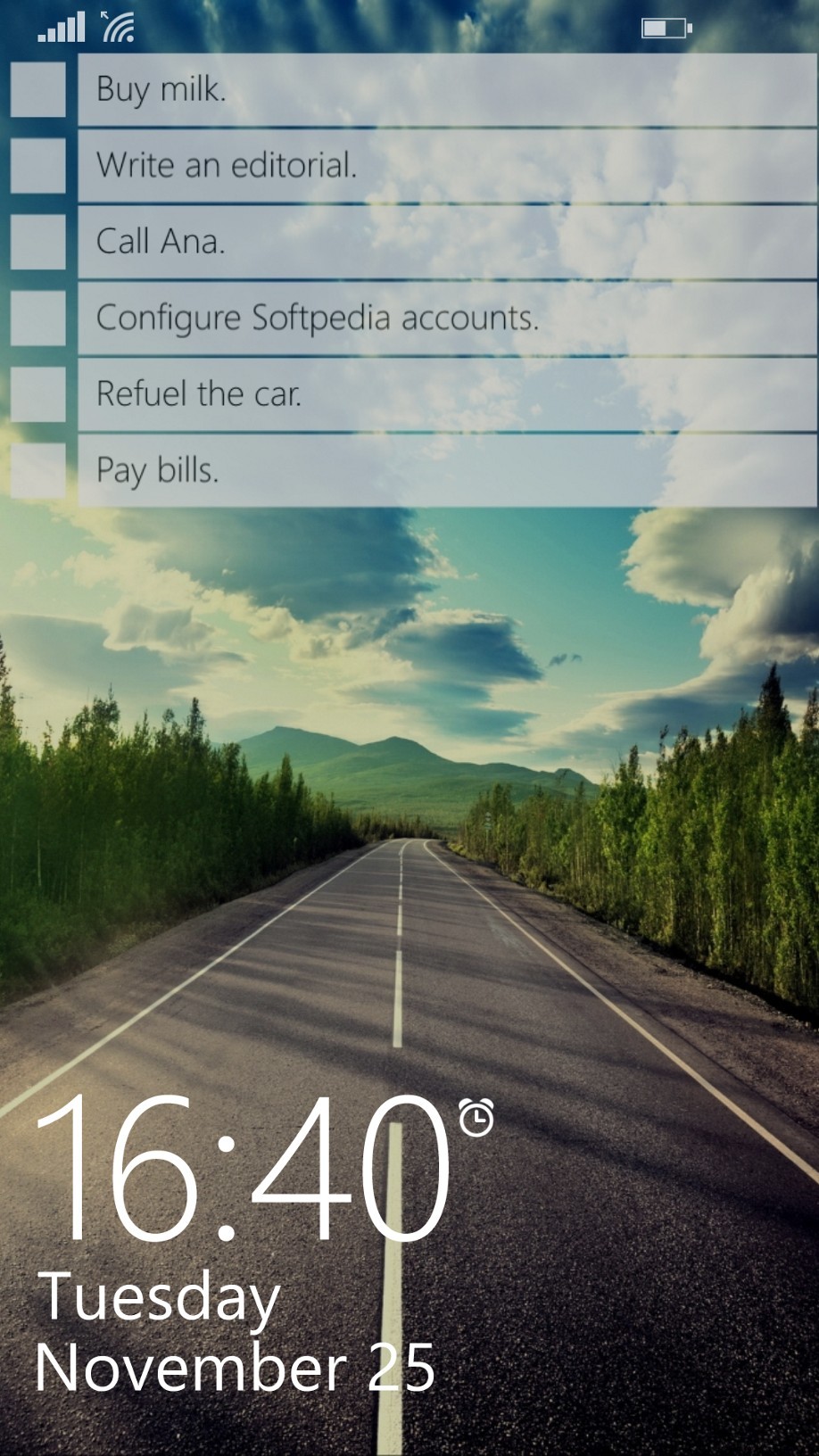Activation Lock helps you keep your Mac secure if it's ever lost, stolen, or misplaced, and can improve your chances of recovering it. Activation Lock can continue to deter anyone from reactivating your device without your permission, even if you erase your device remotely. All you need to do is keep Find My Mac turned on, and remember your Apple ID and password.
How To Lock Your Mac Computer
What you need
The feature works just great to lock files and folders on your Mac. However, there's something that it doesn't support and it's locking your apps. If you want to lock certain apps from being launched on your Mac, you can't use the standard locking method. You can lock your iPhone so its touch screen doesn't work. This prevents the iPhone from dialing phone numbers, playing music, or doing anything else when it's in your pocket, rubbing against your pants, or in your purse making contact with keys and other stuff. Apple makes locking your. Click on the Security & Privacy pane. Choose the General tab and check the option that starts ‘Require password' Choose an option from the dropdown menu. Now, whenever your Mac goes to sleep or a screensaver starts, it will lock and you'll have to authenticate with your user password, Apple Watch or TouchID to gain access.
- Upgrade your Mac to macOS Catalina.
- Your Mac must have the Apple T2 Security Chip. You can learn whether your Mac has this chip in Apple menu > About this Mac > System Report > Controller.
- Enable two-factor authentication for your Apple ID.
- Leave Secure Boot enabled on its default setting, Full Security, with 'Disallow booting from external media' selected under the External Boot section.
How it works
When you turn on Find My Mac, your Apple ID password or device passcode is required before anyone can turn off Find My, erase your Mac, or reactivate and use your Mac.
Activation Lock is automatically enabled when you set up Find My on devices that meet its system requirements.
If your Mac goes missing
If you ever misplace your device or think it may have been stolen, you can sign into iCloud.com or use the Find My app to locate your device on a map, play a sound, lock your Mac, or erase it. Activation Lock works in the background to make it more difficult for someone to use or sell your missing device, but you can still remotely lock your device with Find My to secure it with a unique passcode and display a message onscreen for anyone who may find it.
How to check that Activation Lock is on
- Choose Apple menu > About this Mac.
- Click System Report.
- Click Activation Lock Status under Hardware.
Turn off Activation Lock before you send your Mac in for service, sell it, or give it away
Before you send your Mac in for service, sell it, or give it away, you should turn off Activation Lock. If you have access to the device, turn off Find My Mac to disable Activation Lock, and then sign out of iCloud.
- Choose Apple menu > System Preferences.
- Click Apple ID, then click iCloud.
- Turn off Find My Mac.
- Click the Sign Out button.
If you can't access your Mac and you need to turn off Activation Lock, follow these steps.
- Go to iCloud.com and sign in with your Apple ID.
- Click Find iPhone.
- Select All Devices, then click your Mac.
- Click Erase Mac. Select Next until the device is erased.
- Click next to your Mac.
What to do if your Mac starts up to an Activate Mac window
If you've purchased a Mac from someone other than Apple or an authorized Apple reseller and the device starts up to an Activate Mac window, the device is still linked to the previous owner's account. You'll need to ask them to remove the device from their account.

macOS provides multiple methods to protect the data on a Mac: a user account password, encryption via FileVault, and optional low-level security measure that prevents starting up from storage devices other than the selected startup disk. That's known as the firmware password or EFI (Extensible Firmware Interface) lock, which will also block the user's ability to use all startup key combinations, except the NVRAM or PRAM reset combinations. This command (Option + Command + P + R), however, will initiate the machine from macOS Recovery instead.
The Lost Mode feature of Find My Mac will remotely lock the Mac with a firmware password for one-time use. The user's Mac receives the lock instruction from iCloud, restarts, and asks for the system lock PIN code that they set up. After entering the passcode the Mac starts up from the designated startup disk and disables the passcode.
Download CleanMyMac X from MacPaw's website and clean up to 500MB of junk data from your computer while enjoying all the features of the software without major limitations.
A firmware password is not the same as the administrator password or login password. It's a separate password that appears immediately after boot and must be entered into the system lock screen, which appears as a lock symbol on either a black or a gray background.
Firmware Passcode Security
Low-level passwords are quite secure, which also means there is potentially a headache if the password is forgotten. If you or any of your users can't remember the firmware password or passcode, know that Apple doesn't allow for any workarounds, but instead recommends scheduling a service appointment with an Apple Store or Apple Authorized Service Provider. The process requires the original receipt or invoice as proof of purchase. How to screenshot a page on windows 10.
Earlier versions of macOS required manual installation of the firmware but, starting in 2015, Apple began bundling EFI updates with the macOS updates in order to deliver security patches to all users. But as security firm Duo Labs discovered in late 2017, some Macs aren't getting the right firmware, which makes them vulnerable to hackers. They recommend checking the firmware version and updating if needed.
Firmware Passcode Location
On Intel-based Macs shipped before 2011, the firmware password was stored in the PRAM and read by the system EFI firmware before other PRAM variables. That lead to a serious security issue, allowing the firmware to be revealed in a native macOS app and weakening the enhanced security Apple had hoped to introduce with the addition of the firmware password.

macOS provides multiple methods to protect the data on a Mac: a user account password, encryption via FileVault, and optional low-level security measure that prevents starting up from storage devices other than the selected startup disk. That's known as the firmware password or EFI (Extensible Firmware Interface) lock, which will also block the user's ability to use all startup key combinations, except the NVRAM or PRAM reset combinations. This command (Option + Command + P + R), however, will initiate the machine from macOS Recovery instead.
The Lost Mode feature of Find My Mac will remotely lock the Mac with a firmware password for one-time use. The user's Mac receives the lock instruction from iCloud, restarts, and asks for the system lock PIN code that they set up. After entering the passcode the Mac starts up from the designated startup disk and disables the passcode.
Download CleanMyMac X from MacPaw's website and clean up to 500MB of junk data from your computer while enjoying all the features of the software without major limitations.
A firmware password is not the same as the administrator password or login password. It's a separate password that appears immediately after boot and must be entered into the system lock screen, which appears as a lock symbol on either a black or a gray background.
Firmware Passcode Security
Low-level passwords are quite secure, which also means there is potentially a headache if the password is forgotten. If you or any of your users can't remember the firmware password or passcode, know that Apple doesn't allow for any workarounds, but instead recommends scheduling a service appointment with an Apple Store or Apple Authorized Service Provider. The process requires the original receipt or invoice as proof of purchase. How to screenshot a page on windows 10.
Earlier versions of macOS required manual installation of the firmware but, starting in 2015, Apple began bundling EFI updates with the macOS updates in order to deliver security patches to all users. But as security firm Duo Labs discovered in late 2017, some Macs aren't getting the right firmware, which makes them vulnerable to hackers. They recommend checking the firmware version and updating if needed.
Firmware Passcode Location
On Intel-based Macs shipped before 2011, the firmware password was stored in the PRAM and read by the system EFI firmware before other PRAM variables. That lead to a serious security issue, allowing the firmware to be revealed in a native macOS app and weakening the enhanced security Apple had hoped to introduce with the addition of the firmware password.
In 2011, however, Apple added an important change to the system: the firmware password was moved to a separate programmable controller from Atmel. This component contains lockable flash memory to store the password and requires special programming with identifier numbers for both the Mac's motherboard and the Atmel chip to access and reset it.
Since the controller is an independent component, the only way to bypass it is to manually remove it from the motherboard, but this requires highly precise reflow soldering tools and techniques.
Bypassing the Mac Firmware Password on MacBooks With Upgradeable RAM
This hardware hack works on both Intel- and Motorola-based MacBooks and requires users to remove the RAM and reinstall it. You can check our guide on how to upgrade the RAM on Macs for further reading.
- Shut down your computer and remove the battery.
- Locate your RAM, remove one of the RAM modules and put it aside.
- Put the battery in, and boot your computer while holding the Command + Option + P + R keys to reset the parameter RAM.
- Wait for the chime to sound three times.
- Release the keys and shut down the computer.
- Remove the battery again, and reinsert the RAM module.
- Put the battery back in.
- Boot up your Mac, and you should not see the firmware lock again.
Disable the Password With Firmware Password Utility
How To Lock Your Imac
- Restart your Mac while holding down the Command + R keys to enter Recovery Mode.
- When the Utilities screen appears, go the Utilities menu bar, and select 'Firmware Password Utility'.
- Choose to turn the Firmware Password off.
If none of the above methods worked, there are still two more options to try: either have Apple do it for you, so long as you have the original receipt or invoice, or alternatively use any of the EFI lock bypass hardware kits available for sale on various sites. In using one of these EFI lock hardware bypass methods you'll almost certainly void your warranty, so it is down to you whether you want to risk the procedure.
Best Mac Optimization Software of 2020
| Rank | Company | Info | Visit |
| |||
| |||
|
Get the Best Deals on Mac Optimization Software
Stay up to date on the latest tech news and discounts on Mac optimization software with our monthly newsletter.
